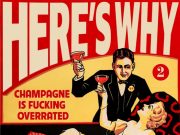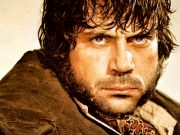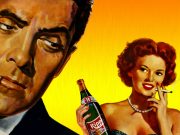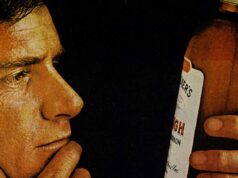Forget mom. Forget apple pie. The game of baseball is the single most recognizable symbol of our national heritage and character.
For well over a century the game has been our companion, through times both lean and fat, and has kept a country with a never-ending thirst for heroes well-stocked. Even those who have little interest in the game are familiar with its exemplars: Babe Ruth; Ty Cobb; Mickey Mantle; Jackie Robinson; Willie Mays. Children are reared on the game, its players, and their exploits.
Most of their exploits, anyhow.
Throughout the summer, ESPN highlights clutch hitting, long drifting dingers, shoestring catches, wild pickoffs at second and well-turned double plays. Players are justifiably esteemed for their amazing feats of athleticism. But when the subject turns to off-field behavior the tone gets all snarky. This is especially true when talking about what athletes put in their bodies. Take steroids. Major league players are routinely vilified for stepping even an inch out of line, despite the near total lack of evidence that steroids improve a player’s batting average—Barry Bonds was a serious hitter long before he went on the juice and turned his head into a pumpkin.
It boils down to this: of the four big-time American sports (football, basketball, and hockey being the other three) baseball is viewed as the one with the most class. Unlike football and hockey, baseball isn’t a brawl, it’s a chess game, a finely-tuned merger of athletics and smarts, a competition as much cerebral as physical. Football players are expected to be violent. Football is a violent game. Baseball, apart from the occasional collision at home plate, or bench-clearing tussle, isn’t. Baseball players are supposed to carry themselves with an air of calm, with a certain degree of stoicism, and with a kind of quiet arrogance designed to inspire confidence rather than disenchantment.
Getting regularly liquored-up doesn’t fit the image we’ve assigned ball players. But this hasn’t always been the case.
It wasn’t all that long ago that everything the average fan knew about his favorite player was encapsulated on the back of a baseball card. Personalities took a back seat to statistics. What happened on the field was paramount. Except for certain rare circumstances (e.g. Joe DiMaggio’s marriage to Marilyn Monroe, or Lou Gehrig’s illness), fans were not privy to players’ private lives. As a result, players were able to ditch their uniforms after a game and act as they wished, safe in the knowledge that, for the most part, no one was paying attention.
These days, it’s a whole other, uh, ballgame. In line with our ever more intrusive culture, ball players are scrutinized as never before; scrutinized, analyzed, and vilified for stepping out of line. Entire television programs are devoted to unearthing the foibles and follies of our athletes, and then subjecting suspect behavior to a critique by a panel of “experts,” most of whom have no more business engaging in psychological speculation than Mr. Ed has entering the Kentucky Derby. This is why so many professional athletes appear to be cardboard cut-outs; mannequins in uniforms mouthing tedious clichés, vanilla and boring as dirt.
It’s enough to make a fella wish it was 1986.
Now there was a year for baseball. It was the last year that a bunch of unabashed party animals were front and center on a major league baseball team. The New York Mets of that summer were, collectively, and with very few exceptions, drunkards without peer. They were also about as talented a team of ball players as has ever prowled the diamond.
Opponents called them “arrogant,” “insufferable,” and “a bunch of assholes.” They weren’t far off the mark. The ’86 Mets swaggered. They strutted. They punished other teams and smiled while they did it. Over the course of that storied season, they were involved in four bench-clearing fights—not light rounds of pushing and posturing, but full-bore mob scenes, complete with blood, torn clothing, and dark intentions. The team earned the wrath of the entire league when they recorded a rap song (Get Metsmerized). It went double platinum. Angry moral posturers shrieked when several players lit cigarettes in the dugout, and when many more took the field with noticeable hangovers. Pitcher Bobby Ojeda summed up the team when he said: “We were throwbacks. We were like, ‘Gimme a steak, gimme a fuckin’ beer, gimme a smoke, and get the fuck out of our way.’” Compared to today’s bland players, the Mets were monsters, the antithesis of everything the game has become.
The 1986 Mets roster reads like it was lifted from an All Star Game program: Dwight Gooden, Darryl Strawberry, Keith Hernandez, Lenny Dykstra, Bobby Ojeda, Mookie Wilson, Gary Carter. By anyone’s estimation, this is a serious line-up. They had power hitting, acrobatic defense, and white-hot pitching.
They played hard and, well, they played hard.
We’ll disregard Gooden and Strawberry’s well-known cocaine problems, and also the fact that baseball players, in those days, ate speed like candy, and concentrate on their massive intake of alcohol. They were drinkers, these guys; mostly beer, but they’d tipple about anything. And they did it right out there in public, too, often gathering after games at Shea at a blue collar watering hole called Finn MacCool’s, where they drank with their fans and bought rounds for the house. If you stopped by Finn’s around three in the morning after a home game, you’d likely see a gaggle of Mets staggering along the sidewalk, carrying another teammate between them, trailed by a giggling swarm of female groupies. The owner of Finn’s once claimed that the ’86 Mets single-handedly kept his bar in business.
But the boys didn’t need a regular saloon to get their drink on. No, they could, and did, drink just about anyplace.
They kept a refrigerator stocked with beer in their locker room at Shea. After games, players stayed late into the night emptying it. Many times the team trainer arrived the next morning to find men passed out all over the floor, half-naked, surrounded by crushed Budweiser cans. The trainer would get them on their feet and into the showers. When they were awake, a shot of B-12, a couple of cigarettes and a six-pack got them ready for the day’s double-header. These guys played with hangovers so often it began to seem like their normal physical state.
Not every member of the squad boozed it up regularly (Gary Carter was something of a teetotaling publicity hound), but the men who did more than made up for the others’ lack of effort. First among the diehard boozeheads was the trio made up of Danny Heep, Jesse Orosco and Doug Sisk. Together, they were known as the Scum Bunch. The rest of the dugout feared their practical jokes (a hot foot given to a coach on national television was one notable example), with rookie players and the more straight-laced team members as preferred targets. Their primary motivation was, according to sportswriter Jeff Pearlman, “to corrupt as many Mets as possible.” They were very good at it.
It was on road trips that the Scum Bunch really let themselves blossom. They inhabited the back of the plane, and you entered their domain at your own risk.
First, you’d hear the noise. Hooting, belching and hysterical laughter, punctuated by the steady double thwack! of a baseball bat connecting with a can of beer and the can ricocheting off the wall. Then you’d catch the smell—post-game sweat, cigarette smoke and fart gas, intermingling with the odor of spilled beer and Fritos. Then there was the Scum Bunch themselves, surrounded by as many cohorts as they could attract, playing drinking games with one eye on the lookout for potential victims. There were few short-term visitors to the Bunch’s den. You came to play or you stayed away.
Among the many drinking games they played, the simplest and most popular required only a deck of playing cards. Anyone could follow the rules. When your turn came around the next guy in line held the deck out and you began selecting cards off the top. A red card meant you picked again, while a black meant you drank. Each participant went through an entire deck, then it moved on to the next. The Scum Bunch and their guests might play ten or fifteen decks each on a flight. When they ran out of beer they used mini bottles. The stewardesses quickly learned that they should venture into Scum Bunch territory only when it was absolutely necessary—it was scary back there.
In October of 1986, the Mets, led by the Scum Bunch, pulled off two amazing feats, one on the field and one off.
Although the Mets had pretty much steamrolled most of their opponents, in the NLCS they ran headlong into a feisty Houston Astros team who steadfastly refused to believe that the Mets were the Chosen Ones. For a time all looked lost, and for a team as powerful as the Mets to fail to go on to win the World Series would be a failure of mammoth proportion. So they got serious, or what passed for serious with these guys, and eventually body slammed the Astros in Game 6 to take the NLCS pennant. They were off to the World Series.
The plane ride back to New York turned into a scene of such drunkenness and debauchery that it became the stuff of Major League legend. Putting it baldly, the Mets ate their chartered plane alive and sucked the marrow from its still-shivering bones.
In violation of long-standing policy, many of the players brought their wives and girlfriends along for the trip. Mets management had laded the 707 with three times its usual compliment of alcohol and food. It was to be a celebration. All totaled, the celebration cost United Airlines and the Mets franchise tens of thousands of dollars, including bills for the damage done to the plane.
Some players were already loaded when they boarded. Everyone else (even the straight-laced Gary Carter) got that way quickly. The Scum Bunch was in full frenzy. Players, coaches and various wives and mistresses, careened up and down the aisle toasting, whooping and dancing, while the airline’s crew attempted to serve the special post-win meal of steak and lobster. There was also a large cake with congratulations done in Mets’ blue and orange frosting. It was the first casualty. Moments after its appearance it was put to use as weaponry for what might be the most spectacular food fight in the history of professional sports. People, seats and walls were plastered in gooey frosting, and the party was only ramping up.
Darryl Strawberry, who was about as nasty a drunk as you’re likely to find, decided he wanted to lay down, convinced, in his stupor, that the seats turned into couches. They didn’t, but that didn’t stop Straw from breaking a good half-dozen in his attempt to make them lay flat. Rafael Santana peed down the back of Ed Hearn’s shirt. Wives and girlfriends, those who weren’t otherwise involved in topless shenanigans, yarked in seat pockets. The Scum Bunch started up a game of beer-can baseball. Dented cans sailed through the air, foam spraying like geysers. Guys strapped steaks to their feet and went skiing. There were antics that bordered on public fornication. Several players got into fistfights, then made up and drank to each others health. People did things in the restrooms that defied logic and the laws of physics.
When they landed in New York to the cheers of thousands of fans, the players looked so horrible that spectators could only gape in astonishment, but that didn’t stop Darryl Strawberry from emptying a bottle of Andre Champagne over the head of Mayor Ed Koch.
The next morning at the team meeting, manager Davey Johnson reamed the players in a tirade that lasted several minutes, waving the bill from United in one fist for emphasis.
Then he paused.
“Well,” he said, “do you know what I think? I think in the next four games you’ll put enough money in these guys’ pockets to cover this. So fuck this bullshit.”
The team cheered.
About two weeks later, the Mets beat the Boston Red Sox to win the World Series.
Today, the ’86 World Series is remembered mostly because of Bill Buckner, who committed one of the great errors in baseball history when he let Mookie Wilson’s soft grounder roll between his legs, allowing the Mets to win the game. But let’s not remember it for that alone. Let’s remember it because of the arrogant, swaggering, drunken Mets. They were the last of a long line, and when they passed, the glory days of professional baseball passed with them.
There are too few ball players these days who live their lives without the guidance of public opinion and potential public outrage. A team like the ’86 Mets couldn’t exist today. Guys don’t fuel themselves with liquor anymore. They use steroids and protein shakes. It’s sad.
In closing, let’s hear from the great Keith Hernandez who said, “You don’t win a World Series drinking milk.”
—Rich English
(Note: The Author is indebted to the work of Jeff Pearlman.)










